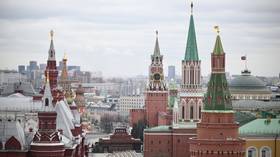Scientists revive 48,500-year-old virus

Melting permafrost may pose a threat to humanity, scientists have warned after reviving an ancient virus which lay frozen for tens of thousands of years.
Viruses such as this are still capable of infecting living organisms, the international team said after they observed nine ancient viruses discovered in the Siberian permafrost infecting amoebas in a lab.
The oldest of the newly discovered viruses is almost 50,000 years old, the team said. “48,500 years is a world record,” Jean-Michel Claverie, a team member and a researcher at Aix-Marseille University in France, told the New Scientist. His team studied a total of seven ancient viruses in its latest study. The group published a preprint of their work earlier in November.
The group, which includes scientists from Russia, France and Germany, previously managed to revive two other ancient viruses that are 30,000 years old. The viruses discovered and revived by the team are considered the most ancient ever revived, although other researchers claim to have revived bacteria that are said to be up to 250 million years old.
All of the viruses revived by the team are of the pandoravirus type – a group of giant viruses only capable of infecting single-cell organisms like amoebas. However, the fact that all nine ancient viruses were still capable of infecting living cells after spending tens of thousands of years in permafrost means that other viruses trapped there that are potentially contagious for plants, animals, or even humans could be released and revived as well, the scientists warn.
“There is a real danger,” Claverie said, adding that “there are bacteria and viruses coming out every day.” However, it is impossible to precisely determine the level of potential danger so far, he added.
Russia has warned about the danger that could arise as a result of the continued thawing of the permafrost caused by climate change. Thawing soil that has been deeply frozen for centuries or even millennia could still contain “some viable spores of ‘zombie’ bacteria and viruses,” Nikolay Korchunov, a senior Russian representative at the Arctic Council, told RT in 2021.
Moscow has said it considers the danger to be serious enough to launch a biosafety project and has called on all other Arctic Council nations to join it. Apart from Russia, the intergovernmental organization includes the US, Canada, Denmark, Norway, Iceland, Finland, and Sweden.













